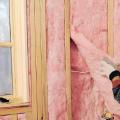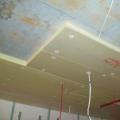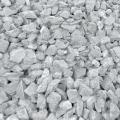Do-it-yourself permanent formwork
Construction technologies, like digital technologies, are developing extremely rapidly. The main direction of their development is to ensure low cost and reliability of buildings. For example, the technology of permanent formwork for strip-type foundations allows, even with a very modest budget, the rapid construction of concrete and reinforced concrete structures that are distinguished by high thermal insulation performance.
It should be noted that this type of monolithic construction appeared quite a long time ago, more than 15 years ago, and has gained particular popularity in recent years. First of all, because the technology is quite accessible and allows you to obtain excellent thermal insulation. Such houses are built within a few days. Usually the technology is used in the construction of small cottages. The reduction in construction costs (provided that high-quality building materials are used) is up to 40–45%!
Technology for installing permanent formwork for strip foundations: construction nuances
Installing permanent formwork for the foundation has several advantages over traditional construction methods, and the first of them is the ability to obtain an extremely “warm foundation” that meets current fire standards. Thanks to the excellent qualities of foam plastic, the foundation is protected from mold and fungi, excessive moisture and is guaranteed to last even in very difficult climatic conditions for over 80 years.
The buyer must carefully monitor the quality of the blocks; they have a high density (the weight of one can be more than 1.5 kg), an ideal shape, and do not form cracks when joined, joining hermetically. There should be no supporting elements in such structures; the block should be installed on its own. Inside it has special grooves with the help of which the concrete mixture adheres to wall surfaces.
The supplier of materials must be verified; the thickness of the formwork walls must be more than 15 mm, otherwise it simply will not withstand the pressure of concrete and will swell.
When buying blocks, look at their quality, it should be perfect, the blocks should not crumble or peel off. Otherwise, it will be extremely difficult for you to clean the concrete structure from all these polystyrene foam residues.
Typically, this technology is used for the construction of small buildings, so pouring concrete by hand is not very difficult.
 Installation of permanent formwork for strip foundations
Installation of permanent formwork for strip foundations The production of a strip foundation from permanent blocks is quite simple in its technology: concrete is poured into the cavity between the formwork slabs; if the project requires increased strength, then reinforcement is inserted. After pouring the concrete and hardening, nothing is removed, and the foam acts as insulation.
Typically, concrete is poured in layers, the reinforcement is tied in the blocks themselves and is not a problem. When performing work on the foundation, the exact geometric location of the blocks in the trench should be taken into account. It is permissible to bury or excavate blocks before concrete work is carried out. They are often reinforced with additional elements, since if any difficulties arise, it will be impossible to determine whether there is a concrete leak or a violation of the foundation geometry. As a result, the user receives a warm and protected foundation, with the costs of construction work on the construction of the zero level reduced by 30–40%.
Technology of erecting walls using permanent formwork: construction nuances
The construction of monolithic houses using permanent formwork has much in common with conventional monolithic construction. For example, the foundation must have concrete reinforcement outlets; this is necessary to ensure the solidity of the entire structure of the house.
When laying wall formwork blocks on the foundation, it is necessary to place them in such a way that all reinforcement passes only through their cavities; only on the third row of blocks can the position be adjusted in relation to the horizontal level. According to the general principle, the process of installing foam blocks-forms is reminiscent of brickwork; here, too, there is a ligation of elements among themselves.
 Installing foam block molds resembles brickwork
Installing foam block molds resembles brickwork For the walls of your monolithic building using foam formwork, you need to use a reinforced frame, consisting of not only vertical, but also horizontal reinforcement laid in each row of blocks. Concrete can be poured after installing three rows of blocks. Usually they are poured like this, every three rows.  Construction of walls using permanent formwork
Construction of walls using permanent formwork
The blocks must be dense and not crumble, otherwise there will be violations of the geometry of the walls.
It is also very important to qualitatively connect the blocks themselves and tie them into rows, otherwise there may be leakage of concrete and violations of the geometry (squeezing out the foam cavities).
From practice, manual pouring of concrete is the preferred method. If all the work is done correctly and with high-quality blocks, you can build walls in one working day.
How to make permanent formwork yourself
Despite the fact that very stringent requirements are imposed on permanent foam formwork, you can try to make it yourself by hand. Typically, the technology will require increasing the wall thickness by 10–15 centimeters. The idea is to place insulation (foam plastic or polystyrene 100 millimeters thick) into the concrete wall. In such structures, the role of permanent formwork is played by flat slate, and the insulation itself is placed closer to the outer part of the monolithic wall.
 Making permanent formwork with your own hands
Making permanent formwork with your own hands For such a homemade design, you will need to take care in advance of manufacturing a volumetric reinforcement frame that has vertical and horizontal elements.
Usually it is easier to tie the frame separately, and only then place it in the formwork cavity.
In general, the construction technology is the same: after installing the reinforcement frame and placing the thermal insulation material, concrete is poured. Among the disadvantages of this technology, there is a very significant one - the need for reinforcement on both sides, from the heat insulator and the opposite wall.
Usually it is difficult to install such formwork; it is necessary to make special stops to maintain the same dimensions of the walls; the tightening elements are usually metal threaded rods that regulate the thickness of the walls by tightening nuts and washers.
In addition, the facade of buildings made from such homemade permanent formwork cannot be plastered with decorative plasters; the only acceptable option would be to use ventilated facades, the so-called siding. However, the technology also has an advantage: if there is a cellophane spacer between the concrete and the slate, the formwork can be easily removed. This is the main advantage over foam plastic permanent formwork, because if you want to remove the latter (foam) from the inside of the walls, you will have to put a lot of effort and time.
It should be noted that among all building structures, monolithic houses are the strongest and most durable. For everyone who decides to build their own home, this technology will be the most acceptable and affordable.
Where to buy permanent formwork blocks
 Fixed polystyrene foam formwork
Fixed polystyrene foam formwork In the last ten years, you can buy permanent formwork made of polystyrene foam not only from imported suppliers, but also from domestic companies engaged in the production of building materials.
When choosing a particular supplier, it is better to verify the quality of the products in person, so it is better to cancel online purchases.
Most builders strongly recommend that if you use this technology, you must check the quality of the foam blocks in person. They must be strong and dense (the weight of one block is more than 1.5 kilograms), have precise geometric dimensions, and fit well together.
If you see that these blocks are crumbling, foam crumbs are falling out of them, and they themselves are soft and easily deformed with little effort, it is strictly forbidden to take them. If you buy these, you will have to thin the concrete and support the formwork on the outer sides so that it does not protrude outward or break altogether.
You should buy blocks from authorized dealers or directly from enterprises. It is worth noting that transporting such blocks is also a very troublesome task, and if the supplier does not provide delivery services, then you will need to take care of a truck of suitable capacity.
Video
Watch a video on how to make permanent formwork.
 Construction materials and list of works
Construction materials and list of works Proper insulation of a wooden ceiling in a private house
Proper insulation of a wooden ceiling in a private house What types of crushed stone are there?
What types of crushed stone are there?